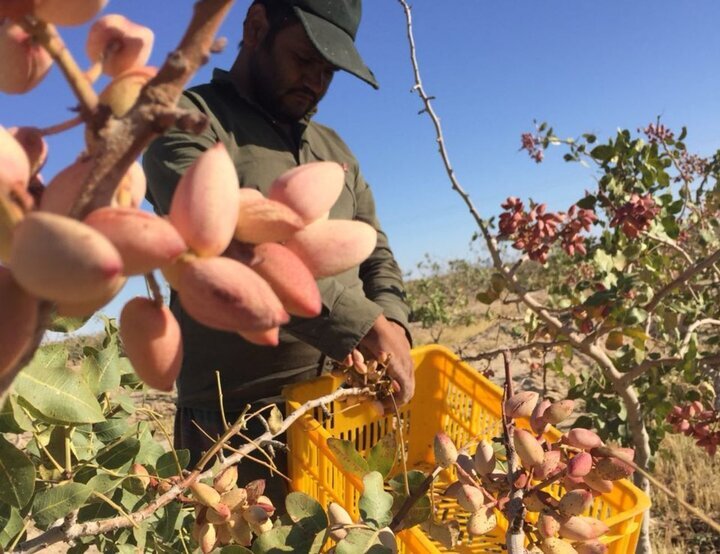Iran’s “green gold” bound to shine again in global markets

TEHRAN – Although Iran is mostly known for its vast hydrocarbon resources, there are some other precious products that people all around the world put the Iranian brand on and appreciate greatly, one of such products is Iranian “green gold” or pistachio.
Cultivation of pistachios in Iran dates back to the Achaemenid period or the fifth century B.C; Like the great dynasty, the Islamic Republic was the world’s unrivaled, leading producer of pistachios for a long time, with southeastern Kerman province being the hub of production for so-called green gold.
The country’s reign over the pistachio market, however, ended in 2012, as the United States for the first time became the largest producer and exporter of pistachios because of the production decline in Iran, mainly due to water shortages and also because of the lack of access to modern technologies and using traditional methods of agriculture.
Over the past decade, climate change has caused severe drought in Iran, leading to 85 percent of the country being classified as arid or semi-arid. The decline in annual average rainfall and shortage of surface water has forced farmers to dig more wells to pump water from underground reserves. Nearly half of the 750,000 wells dug in Iranian farms are illegal, which indicates why the unconstrained use of underground water in agriculture is the main source of water waste in the country.
The situation is the same in Kerman province, which accounts for 70 percent of Iran’s pistachio production. As announced by Hossein Rezaei, the secretary-general of the Iran Pistachio Association (IPA), the production of pistachio in Iran fell by 70,000 tons in the previous Iranian calendar year (ended on March 20) to hover around 150,000 tons.
Hossein Rezaei said that the current year's sprouts have also been destroyed by climate change, and this year it is difficult to keep the market, so government support is required.
According to the official, the country’s pistachio farmers are expected to produce only 135,000 tons of the nut in the current year.
In addition to the negative impacts of climate change, the Iranian pistachio industry has also been affected by western sanctions; although the industry has not been directly targeted, sales of pistachios to foreign markets, including Europe, have been hindered because of the banking and shipping restrictions imposed as part of the punitive measures.
Despite the domestic hurdles and foreign challenges, Iran is still among the top global producers and exporters of pistachios. After relinquishing the top ranking to the United States in 2012, it regained it in 2015 as a result of better access to international markets due to the removal of sanctions and a drop in U.S. production.
Iran and the United States together account for 70-80 percent of global pistachio production and have been competing for the top spot as both the biggest producer and exporter over the past several years. Also, recently Turkey, Australia, and Spain have also increased production and have joined the export market.
In an effort to maintain the country’s distinguished position in the global pistachio market, several plans have been formulated by the Iranian government to support the industry mainly by focusing on the reduction of the impact of the drought.
In August 2020, Iran’s Trade Promotion Organization (TPO) held a pistachio export desk meeting to investigate the challenges and barriers in the way of the country’s pistachio exports.
The government is also encouraging water conservation by allocating bank facilities to farmers to help them buy modern irrigation equipment to replace traditional systems.
Many experts believe that developing farms in regions with better soil and water resources, along with using modern cultivation methods and new types of pistachios with higher resistance to failure and disease would be the best way to regain Iran’s crown in the pistachio market.
Other than the above-mentioned measures, experts and scholars also say Iran could increase its exports by removing customs duty restrictions, providing support to exporters for long-term contracts, and establishing banking enterprises to connect producers and exporters.
With the Iranian government successfully moving toward reducing its reliance on oil revenues in recent years, it is expected to dedicate a good deal of attention and resources to other sectors including the pistachio industry to maintain its lion's share of the global market.
EF/MA
